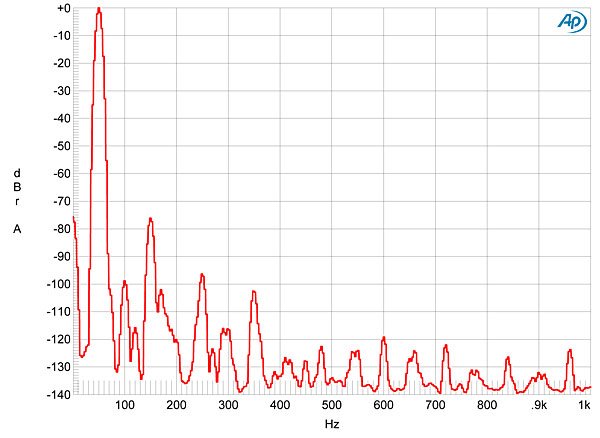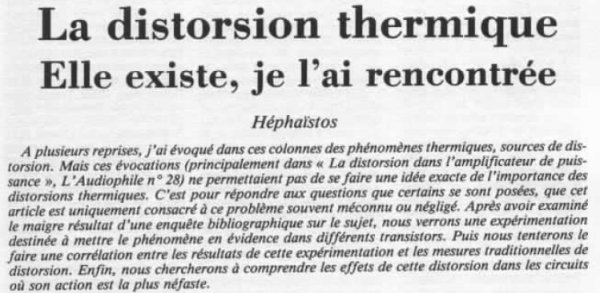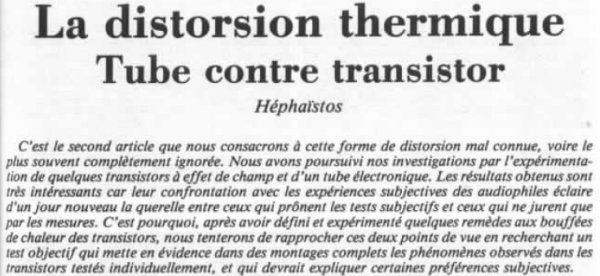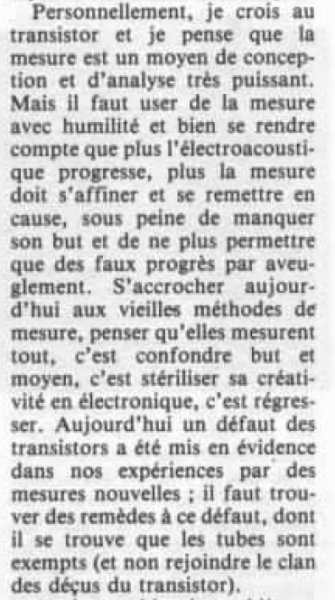Well actually tubes color the sound to seem as if they have more details or more real music. Those differences you hear, are generated by the tube equipment. The input signal actually didn't have it to start with. The tube equipment added it in.
This is entirely 100% bogus. You can't *add* detail. Equipment can loose it, once gone it cannot be recovered.
Aside: Is your OTL circuit patented (i.e. is there a schematic I could see?) Curious...
There is a thread on DIYAudio.com called 'What tubes for a tube amp'. I placed a schematic somewhere on that thread- probably about a year ago or more.
Miles, you don't need a study to know that it's not just an opinion that tubes color the sound, or to know that the color comes from the tube equipment itself. All you need are some fairly banal measurements of the source signal and the output of the tube gear. Or if you don't believe in simple FR and distortion measurements, you can do a null and hear the difference for yourself. This is not to say that it's bad or good, just to say that it is. And I can't point you to peer-reviewed and verified studies on the subject, because no one would put in that kind of effort to confirm the obvious.
This is also not to say that there isn't some as of yet unmeasured and immeasurable ingredient in tubes that raises their fidelity beyond current measurements and reveals detail from the source material that would be obscured by any other technology with the same distortion, compression and noise. Sure...it could happen.
Tim
Something that should be pointed out here is that tubes are often in single-ended configurations, which can lead to certain distortions- which in turn impart certain colorations because the ear interprets distortion as tonality. If you run transistors in similar configurations you can get many of the same colorations. It has a lot to do with topology. Its harder to build single-ended transistor circuits as the distortion is a lot higher. But a notable example of what I am talking about is an amplifier made by Sunn for guitars, back in the early 70s. It was mostly single-ended, and so had a fairly rich sound, much richer than most transistor amps would seem capable of. The amp was single-ended right up the output stage, which was push-pull. So it made a lot of the 2nd harmonic.
You can build tube circuit single ended a lot more successfully because they are so much lower in distortion. So in a preamp it can be single ended (and zero feedback), yet the distortion can be pretty hard to measure! I do believe that many designers go for these types of distortion on purpose though.
Note tubes also have thermal modulation and distortion effects. Feedback solves a host of ills, for either technology. Personally I think the transformer dominates tube amplifier characteristics and discussions of electron flow in semiconductors vs. vacuum and plates/grids/etc. is somewhat moot. The added harmonics from tube amps often leads to a "fuller" sound people enjoy, and I am not immune to that, but it is not as accurate.
I have never heard Atma-Sphere OTL amps so cannot comment on them.
Don is spot on here. The Atma-Sphere amps, FWIW, are fully balanced and differential, so they don't have that 2nd harmonic so often associated with tubes. In fact the even orders are canceled not just at the output of the amp, but at each stage. At one time we were the only ones doing this, now there are plenty of others. I'll just put it this way- if the circuit is fully differential it will not have that 'ever-loven tube sound'. It will be lacking in coloration. This is how transistors do it BTW.
The transformer argument only applies to power amps. And SS amps can also exhibit FR variations (etc.), just typically less than transformer-coupled tube amps.
IME the best tube and solid-state preamps sound very similar. Tube preamps tend to have a little more noise but much greater headroom, something I find especially good for handling the glitches from some DACs and ticks/pops from most all phono cartridge/records. That said, tube preamps with very low distortion seem to often garner the dreaded "sounds like SS" label, as I mentioned in an earlier post talking about the differential tube preamp I designed and reviews of some of the commercial tube preamps.
The distortion characteristics of tube and SS devices, and preamps, are well-known and can be readily measured. Not by me now as I don't have access to good audio-range test equipment at my current workplace, but I have done it in the past. My old SP3a-1 had <0.001% THD at modest (~1 Vrms) output, at my measurement floor and certainly as good as SS. 2HD tends to dominate the output of tube preamps, 3HD (and related IMD products) for SS. And of course many (most?) tube preamps still have much higher output impedance than SS preamps. Even with cathode-follower outputs my ARC was pretty load-sensitive; it did not like the ~10k load of several SS amps nearly as well as the ~100k load of my tube amps and higher distortion resulted with low loads. I did try using a FET buffer for a while but my final system had amps high enough in impedance it wasn't needed.
IIRC, in the audio range tubes tend to have less flicker and popcorn noise than most SS devices, though I am not certain of that (long, long time since I tried to compare noise characteristics). Using a microwave transistor at audio is usually a very bad idea.
Of course no system is perfect, and I suspect most of the problem measuring differences lies in the difficulty of recreating real-world test scenarios (test loads, signals). It is a lot of effort, and after you do all that a bunch of people will jump in and say it does not apply to their system. They'd be technically right but by and large I think the differences are overstated. My perception of the music changes much more with my mood, time of day, weather etc. than by rotating through several components in my system. That said, load (and other) interaction among components is one of the areas I feel most promising for explaining differences, and one of the very hardest to measure and correlate.
There was a discussion of electron flow earlier in this thread.
Again Don has made good points here. Out preamps are fully balanced and differential too, and using a patented Circlotron output that is direct coupled. They have no trouble driving 600 ohms (in fact our MP-1 preamp can drive 32 ohm headphones quite nicely). You need that if you want to drive very long interconnects without HF roll-offs. But more to the point, the better we (as an industry) make a tube amp (or preamp), the better we do it with transistors (and assuming in the case of amps they are both driving a speaker that they are both happy with) the more they will sound more like each other rather than differently, because they are sounding more like music.











